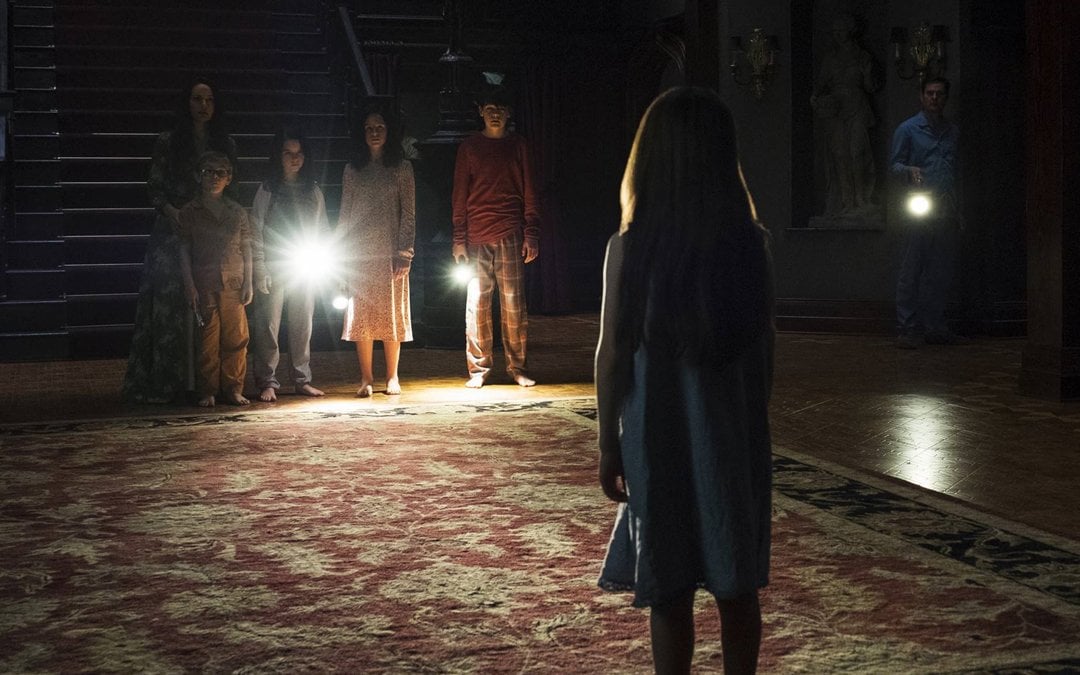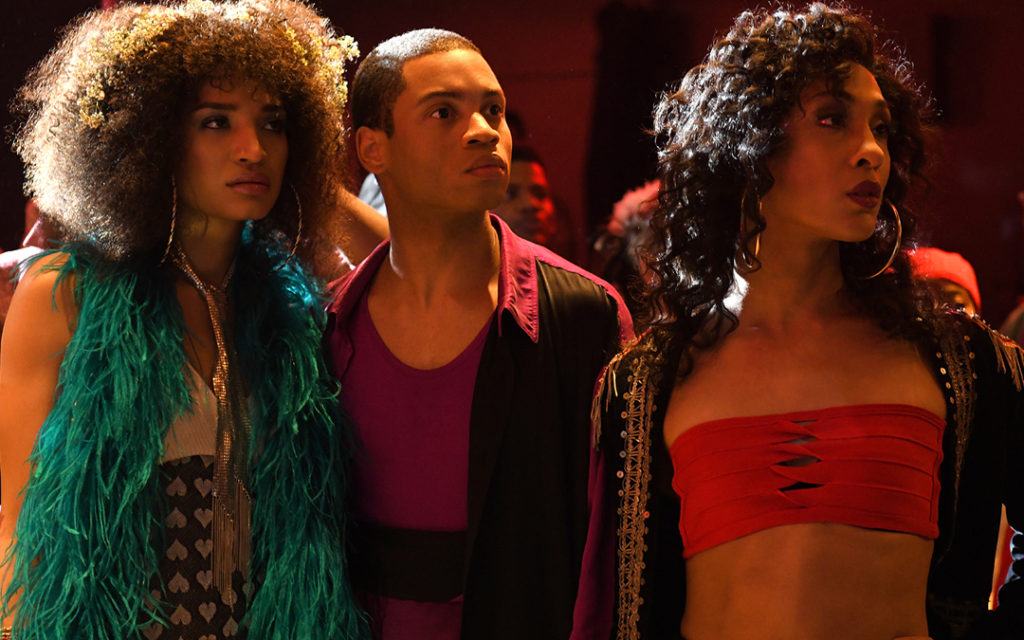All the Write Moves: Yellowstone
July 30, 2018
Exploring the myriad problems facing a contemporary Montana rancher and his adult children, the Paramount Network series Yellowstone doesn’t lack for dramatic content.
Co-created by Taylor Sheridan (Hell or High Water, Sicario, Wind River), the show involves corporate intrigue; daddy issues, political conspiracies, race relations, sibling rivalry, and a host of other topics. Not all of it works.
Standing out from the problematic aspects of Yellowstone — the other co-creator of which is John Linson, previously a producer on Sons of Anarchy — is one thing the show does exceptionally well. Even though the series’ marquee character is he-man patriarch John Dutton (Kevin Costner), Yellowstone’s most consistently interesting and sympathetic character is John’s black sheep son, Kayce (Luke Grimes).
In many ways, Kayce is a textbook example of how to develop, introduce and complicate a recurring character on a television show.
To understand what makes Kayce so compelling (beyond the considerable virtues of Grimes’ performance), it’s necessary to grasp the basic narrative layout of Yellowstone.
Briefly, John owns and operates the largest ranch in Montana, battling three major external foes: A local developer wants to annex and build on John’s land, the neighboring Native American tribe considers John’s land their birthright, and government representatives, from both the federal and state level, regularly besiege John with environmental rules he considers onerous.
Aggravating John’s situation are fraught family dynamics. As widower still fixated on his dead wife, he can’t quite figure out how to manage his adult children. They are stoic ex-soldier Kayce, who left the ranch to live with his Native American wife on a reservation; venomous businesswoman Beth (Kelly Reilly), who self-medicates with booze and sex; and repressed lawyer Jamie (Wes Bentley), who overtly supports John but secretly resents his father’s tight control.
As the one who walked away, Kayce is like John’s conscience personified, living in such a principled way that he shames his father by comparison.
Trapped between two worlds
Kayce’s skin color defines him as an outsider whenever he’s with his Native American neighbors, but his ethnic identity blurs whenever he’s at home with his wife, Monica (Kelsey Asbille) and their young son, Tate (Brecken Merrill). Amidst their small family unit, Kayce isn’t “white” in the sense of skin tone defining his identity. He’s a husband and father.
Nonetheless, assimilation is a complicated business for Kayce. Firstly and most obviously, he remains connected by blood to the Dutton ranch. In fact, he’s the child whom John respects most, and one imagines that John would take him back without hesitation if Kayce expressed contrition for leaving. So even though Kayce shares in the difficulties of reservation life, he has an escape route from privation that his neighbors and in-laws do not have.
He doesn’t belong on the ranch and he doesn’t belong on the reservation, but he strives every day to earn a place on the reservation and to create distance from everything the ranch represents. Yellowstone’s writers consistently depict Kayce adhering to a sort of frontier philosophy, as when he discovers a mortally wounded stranger and grants the stranger’s request for a quick death.
Coded into that action is a reminder that for all his iconoclastic choices, Kayce is still his father’s son. After all, the very first scene of the Yellowstone pilot depicts John euthanizing a mortally wounded animal.
Takeaway: Use environment to create dimensionality
Trapped between two families
Kayce’s life is mostly on the reservation but he has a tether to the ranch: Tate.
In the pilot, Kayce acquiesces to his father’s request for occasional visits with Tate, and Kayce is moved by the warmth John shows as a grandfather — a marked contrast to the ruthlessness John manifests in other aspects of his life.
When constructing dramatic characters, it’s always useful to think deeply about the characters’ roots. Then, plant the character as far away from those roots as possible, creating divided loyalties.
Sheridan and Linson did this artfully by locating Kayce’s home on the reservation; the very ground on which he stands while at home is an affront to his father. Similarly, it is not accidental that Monica comes across in early episodes as the one true innocent among the show’s major recurring adult characters.
Whereas Kayce’s family of birth is defined by avarice and infighting, Kayce’s family of choice is defined by strength formed through generations of adversity and tradition. The show is too clever to make the Caucasian/Native American dichotomy simplistic, but at the same time viewers can plainly sense the push and pull of both worlds.
Kayce lives in some respects like a Native American, honoring tribal rights and respecting the land, but he was raised a Dutton and the conditioning of our early years never really goes away.
Takeaway: Use backstory to create inner conflict
Trapped between two codes
The most delicate aspect of Kayce’s characterization is also the most explosive.
Situations contrived by the series’ writers force Kayce to make painful moral choices in every episode, even though the consequences of those choices are unknown. This technique forces Kayce to grow, but not in the tidy way that movie characters usually evolve; instead of simply “learning something” or “becoming a better person,” Kayce makes difficult in-the-moment decisions and then accepts the repercussions.
In so doing, he becomes a new person after every test.
The pattern begins during the climax of the show’s two-hour pilot, when Kayce finds himself in the middle of a gunfight and must decide whether to put down an armed man or let that armed man kill a helpless victim (giving away the identities of these characters would spoil too much. Suffice to say it’s a horrific situation from an emotional perspective). Left with only bad options, Kayce makes what he believes to be the best available choice, thereby triggering a series of calamitous aftereffects.
It remains to be seen how Sheridan, Linson and their writers will round out Kayce’s first-season journey, but at this early stage it seems clear that one guiding principle for writing Kayce involves putting his old code into conflict with his new code.
His old code is simple: Family first. The Duttons are capable of dealing unethically with outsiders but John demands that they treat relatives honorably. Kayce’s new code, informed by his lessons learned on the reservation, encompasses a broader worldview — more historical, more holistic, more humane.
Every decision that Kayce makes puts two considerations at odds — what would the old Kayce do and what would the new Kayce do? In any given circumstance, figuring out a compromise might require hesitation and hesitation could be deadly. Simply put, no matter what path Kayce follows, he pays a price.
Takeaway: Use moral crises to expedite character growth
Written by: Peter Hanson
Peter Hanson is a Los Angeles-based writer, filmmaker and teacher. He directed the screenwriting documentary Tales from the Script, and he teaches at Pepperdine University and UCLA Extension. He provides script consulting at www.GrandRiverFilms.com.



